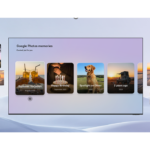Introduction
As a marketer, you know the importance of storytelling. It’s one of the most powerful ways to connect with your customers and create an emotional bond. But did you know that there are different structures you can use to create a more effective story?
Each structure has its own unique set of benefits, and the right one depends on your story, your audience, and your goals. In this article, we’ll introduce you to 10 of the most common storytelling structures. We’ll also give you some tips on how to choose the right one for your brand and your customers.
The 10 Brand Storytelling Structures
There are 10 main structures that can be used for brand storytelling. You can mix and match them to create a story that’s specific to your business and your customers. Here are a few examples:
- The Hero’s Journey: This is the classic story of the underdog who comes from nothing to become a hero. This structure is perfect for businesses that want to inspire their customers.
- The Transformation Story: This is the story of a character who goes through a dramatic change, usually for the better. This structure can be used to show how your product or service has transformed your customer’s life.
- The Quest Story: This is the story of a character who embarks on a journey to find something or someone important. This structure is perfect for brands that want to emphasize their commitment to their customers.
- The Cinderella Story: This is the story of an everyday person who becomes extraordinary with the help of something or someone special. This structure can be used to show how your product or service has helped your customer stand out from the crowd.
- The Battle Story: This is the story of an underdog who defeats the odds to win against a powerful opponent. This structure can be used to show how your product or service has helped your customer overcome difficult challenges.
Examples of Each Brand Storytelling Structure
Now that you understand the different structures of brand storytelling, let’s take a look at some examples.
- The Hero’s Journey: Apple
- The Transformation: L’Oreal
- The Quest: Nike
- The Enemy Within Coca-Cola
- The Battle: Ford
- The Journey Home: Southwest Airlines
- The Rebirth: Pepsi
- The Comedy: Wendy’s
- The Tragedy: Kodak
- The Romance: Tiffany & Co
The Benefits of Brand Storytelling
There are plenty of reasons to start using brand storytelling in your marketing strategy. For one, it can help you connect with your customers on a deeper level. When you share your brand’s story, you are giving your customers a chance to get to know you better and understand your values.
And when customers feel like they know and understand your brand, they are more likely to become loyal, lifelong fans. Brand storytelling can also help you stand out from the competition since most businesses don’t take the time to tell their story in an interesting and engaging way.
Plus, brand storytelling can be an extremely effective marketing tool it can help increase website traffic, improve conversion rates, and boost sales. And it doesn’t have to be expensive or time-consuming to create a great brand story. All it takes is a little creativity and some effort.
How to Get Started With Brand Storytelling
Now that you know what brand storytelling is and why it is so important, it is time to get started. Here are 10 effective ways you can use brand storytelling to connect with your customers:
- Use customer testimonials and user-generated content.
- Share your origin story.
- Use metaphors and symbols.
- Incorporate storytelling into your marketing campaigns.
- Highlight your company values.
- Make an emotional connection.
- Use visuals to tell your story.
- Help your customers visualize your products or services in use.
- Write compelling copy that tells a story.
- Get creative with your storytelling formats.
10 Ways to Connect With Customers Using Brand Storytelling
- The Rescue: When a customer has a problem, your brand steps in to save the day.
- The Origin: Share the story of how your brand came to be and what drives it forward.
- The Transformation: Describe how your products or services have changed the lives of your customers for the better.
- The John Hancock: Share an inspiring story about a customer or employee who embodies your brand values.
- Going Beyond: Highlight a time when your brand went above and beyond for a customer or community.
- values
- Belonging: Describe how your brand helps customers feel like they belong to something bigger than themselves.
- The Underdog: Share a story about how your brand overcame adversity to emerge victorious.
- rebels
- Doers: Share a story about how your brand is taking action to make the world a better place.
Conclusion
As we’ve seen, brand storytelling is a powerful way to connect with your customers on a deeper level. By using one or more of the 10 structures we’ve outlined, you can create brand stories that will resonate with your audience and leave a lasting impression.
So what are you waiting for? Start brainstorming how you can use brand storytelling to take your business to the next level.

















